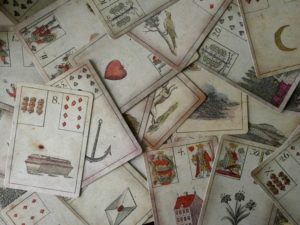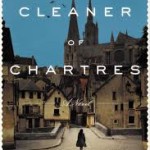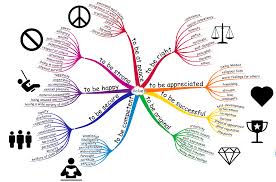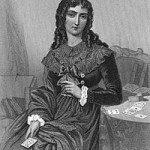
by Sandra Gulland | Mar 26, 2018 | Adventures of a Writing Life |
Because I publish only every four or five years, in spite of my best intentions — in spite of being at my desk virtually every day for hours! — I forget how fraught the publication process is.
The first sign of “nerves” is going into a tizzy over the cover. I virtually never go into tizzies, but this almost always happens over a cover! And then into a tizzy again over the jacket copy: is it ever just right? And then there are the discovered typos that must be corrected right up until the hour before the book, my baby, hits the press. (I imagine this as a violent collision, not a birth — how strange is that?)
And then: a long, long moment of silence (please, as for a memorial). The book is in print. My job is done.
Ha. Not quite. What’s to come is the scariest part, and that’s the worry, the thoughts of all the ways in which The Novel could have been better. (For it continues to live in motion in my mind.)
The memory of how rushed writing it had been at the end, and how — no doubt — readers will be disappointed. It will be beautiful to behold, I know — such a lovely cover now! — but will it enchant?
Enchantment does not come easy, especially these days.
And then, among the early reviews, I read:
I enjoyed this book so much that I’ve read it twice already!
This is from “Leslie U,” whom I do not know. I want to print this sentence on a banner and pin it over my desk. (Maybe I will.) It’s what I aspire to!
I breathe. Maybe it’s going to be all right. There will be readers who like The Game of Hope. Not everyone, I know, but some.
Leslie U goes on to say:
Being a fan of the Josephine B. Trilogy, I have been anticipating this novel from Ms. Gulland. Her tale about the life of Josephine’s teenaged daughter Hortense and her recovery in the wake of the French Revolution is both realistic and poignant. Roommates, letters home, teenage crushes and innocence brought it to life for me. I especially enjoyed the way the Lenormand Cards were woven throughout the novel. I’ve purchased a deck to play the Game of Hope myself!

Ah, the wonderful Game Of Hope. I often cast those cards as I was writing Hortense’s story.
Maybe I should cast them now, ask: How are you doing, Hortense?
{Photo at the top is by Bank Phrom on Unsplash.}
SaveSave

by Sandra Gulland | Oct 10, 2013 | Adventures of a Writing Life, Recommended Books, Movies, Podcasts, etc., The Game of Hope, The Writing Process, Work in Process (WIP) |
When I was asked by Penguin US if I would be interested in reading Salley Vickers’ new novel, The Cleaner of Chartres, of course I said yes. I’d read Miss Garnet’s Angel by her, and enjoyed it very much.
 The Cleaner of Chartres is more unusual, more challenging in structure, but has something of the same charmingly old-fashioned feel to it. (I kept thinking Balzac.) I both loved this novel and struggled with it, and in the end I adored it.
The Cleaner of Chartres is more unusual, more challenging in structure, but has something of the same charmingly old-fashioned feel to it. (I kept thinking Balzac.) I both loved this novel and struggled with it, and in the end I adored it.
The novel unfolds in the present (in Chartres, France), and in various other French cities in the past (Evreux, Rouen, Le Mans), revealing by stages the life of one woman, Agnes, the cleaner of the title.
Agnes is an able if mysterious young woman with a talent for sorting and cleaning, a vocation that pulls her into the messy lives of a number of people—and, in the process, complicates her own.
There are mysteries throughout: I won’t spoil it for you by revealing what these are, but suffice it to say that in coming to Chartres, Agnes is trying to escape a troubling past.
This is a gentle novel, peopled with charming eccentrics. Vickers is a polished writer with a charming sense of humour: I love the texture of her prose. My one reservation (and the cause of the struggle mentioned above) is that since there are a number of different characters in each city, I had to keep notes on who was where. A cast of characters would have helped, and a map would have been a pleasant addition as well.
I was especially delighted with the Afterword, where Vickers explains what happened to some of her fictional characters. As if—and yes, I do believe it so—they all went on living. A lovely touch.
“Realism with a subtle fairytale quality,” said the Publishers Weekly reviewer, and that captures it perfectly. Vickers is a wonderful novelist.
Life update: I’m preparing for Canadian Thanksgiving—a big event here!—and for heading to our winter home in San Miguel de Allende, Mexico, not long after. (See my last blog post on what that entails.)
The last draft of the Hortense Young Adult is tucked away until early November. In the meantime, in the early creative hours, I’m giving some thought to the premise, tag and log lines, using the guidelines from a worthwhile 3-session on-line course on “Rapid Story Development,” using, among other things, Enneagrams, a method for analyzing character.*

Enneagrams are complex, but intriguing: I do love learning systems. Simply framing a premise with the help of the class guidelines has helped me see how the story needs to be changed.
Another thing I’m studying right now is the Lenormand method of foretelling the future—a type of Tarot which is surprisingly popular.
 Madame Lenormand was a contemporary of Josephine Bonaparte; in fact, she lived close to Josephine’s delightfully eccentric aunt Fanny. Lenormand was famous for her accurate predictions; she exploited and enhanced her fame by becoming a prodigious writer and publisher on matters occult, as well of a faux memoir of Josephine (a “memoir” that has always intrigued me).
Madame Lenormand was a contemporary of Josephine Bonaparte; in fact, she lived close to Josephine’s delightfully eccentric aunt Fanny. Lenormand was famous for her accurate predictions; she exploited and enhanced her fame by becoming a prodigious writer and publisher on matters occult, as well of a faux memoir of Josephine (a “memoir” that has always intrigued me).
Madame Lenormand is unlikely to be a character in my Hortense novels, but her card-fortunetelling method might well be. In any case, I’m enjoying exploring the cards.

At some point, “playing” the cards was called The Game of Hope, my current working title—and one I rather like.
The calligraphy image at the top is from the wonderful Bibliodyssey blog.
* The rapid story development course mentioned above is no longer online, but there is an excellent book on the subject now: Rapid Story Development: How to Use the Enneagram-Story Connection to Become a Master Storyteller by Jeff Lyons. Unfortunately, it’s extremely expensive, even in Kindle format. With luck, you should be able to get it through a library. If you use Amazon.com, you can rent the Kindle edition for under $10.






 Madame Lenormand was a contemporary of Josephine Bonaparte; in fact, she lived close to Josephine’s delightfully eccentric aunt Fanny. Lenormand was famous for her accurate predictions; she exploited and enhanced her fame by becoming a prodigious writer and publisher on matters occult,
Madame Lenormand was a contemporary of Josephine Bonaparte; in fact, she lived close to Josephine’s delightfully eccentric aunt Fanny. Lenormand was famous for her accurate predictions; she exploited and enhanced her fame by becoming a prodigious writer and publisher on matters occult, 
